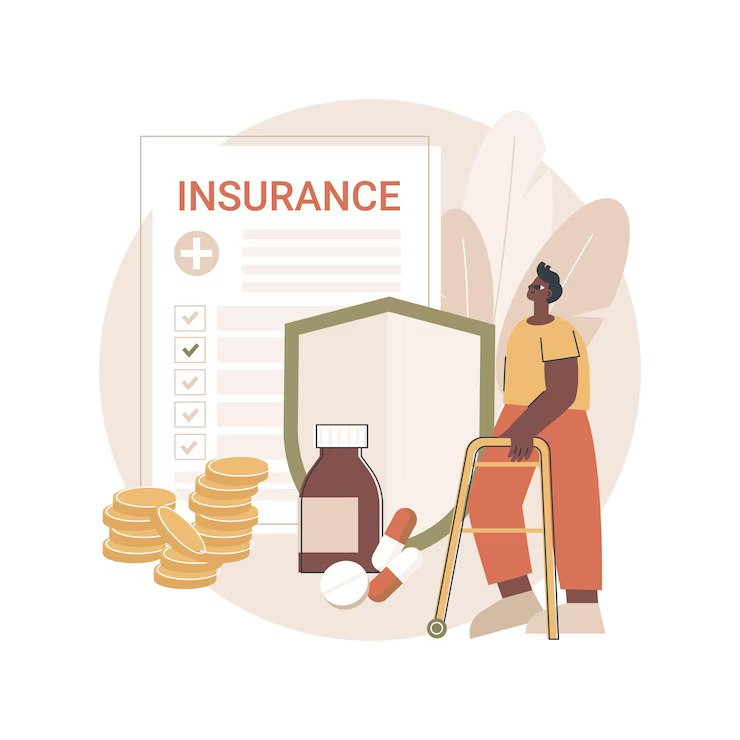6 Lesser-Known Details Of Vendor Liability Insurance

Are you a vendor looking to safeguard your business against unforeseen risks?
If so, you may already be familiar with vendor liability insurance. While it’s common knowledge that this type of coverage protects against accidents and injuries caused by vendors, there are lesser-known details that could make all the difference when it comes to your peace of mind.
Here Are 6 Lesser-Known Details Of Vendor Liability Insurance
Think of it as a safety net that not only shields you from potential financial losses but also ensures the survival of your business.
Here are six lesser-known insurance details, demystifying this crucial protection for your entrepreneurial journey.
1. Understanding Coverage Limits
When it comes to vendor liability insurance, one key aspect that often goes unnoticed is the concept of coverage limits. Simply put, coverage limits refer to the maximum amount an insurance policy will pay out in the event of a covered claim. This vital detail can significantly impact your financial well-being and the survival of your business.
Liability insurance for vendors typically comes with both aggregate and per-occurrence limits. The aggregate limit represents the total amount the insurance company will pay for all claims within a policy period. On the other hand, the per-occurrence limit sets the maximum payout for each claim.
To better grasp the significance of coverage limits, consider an example. Imagine you run a food stall at a bustling weekend market. Unfortunately, a customer accidentally slipped on a wet surface near your booth and was injured.
They decide to file a lawsuit against your business, seeking compensation for medical expenses and lost wages. In this scenario, liability insurance for vendors and its functions will come into play.
Therefore, to safeguard themselves, it is advised that every vendor must have some sort of litigation insurance, states Marine Agency Corp. It further advises that when selecting coverage, vendors should consider the following factors:
- Litigation Coverage: Insurance to safeguard against potential lawsuits, agreements, and court costs.
- Property Damage Coverage: Insurance for property damage, including personal and client property in your care.
- Accident Coverage: Protection in case of accidents caused by your employees or managed by your business.
However, if your coverage limit is set too low, it may not be sufficient to cover all the expenses associated with the claim. It’s crucial to carefully assess your business’s potential risks and liabilities and ensure that the coverage limits of your liability insurance for vendors align with your needs.
2. Additional Insured Endorsements
When exploring vendor insurance protection, it’s essential to delve into additional insured endorsements. These endorsements are an often overlooked but crucial aspect of your policy that can provide added protection and peace of mind.
According to Investopedia, adding insured parties to a liability policy expands the coverage to include individuals or entities beyond the named insured. The term “additional insured” is commonly used when the primary insured needs to protect other parties who are associated with the actions or activities of the designated insured.
Imagine you’re a vendor participating in a trade show. The event organizer may require you to add them as additional insured on your liability insurance policy. If a claim arises from your operations at the trade show, the event organizer will also have coverage under your policy. Essentially, it extends your insurance protection to them.
3. Contractual Requirements
When considering vendor insurance protection, it’s crucial to understand the contractual requirements that may be imposed upon you. Many venues, event organizers, and clients often have specific insurance requirements that vendors must meet to participate in their activities or projects.
These contractual requirements typically outline the minimum coverage limits, types of coverage needed, and even the inclusion of additional insured endorsements. Failure to comply with these requirements may result in being excluded from lucrative opportunities or facing potential legal and financial consequences.
4. Exclusions And Limitations
While vendor liability insurance provides essential protection, it’s crucial to be aware of the exclusions and limitations within your policy. These are specific circumstances or types of claims that your insurance may not cover, potentially leaving you vulnerable to financial risks.
Insurance policies often have standard exclusions, such as intentional acts, criminal activities, or claims arising from services. However, there may be additional exclusions or limitations that are unique to your policy or insurance provider. These could include certain high-risk activities, specific locations, or types of products or services.
To ensure you comprehensively understand your coverage, carefully review the policy documents and consult with your insurance provider. It will help you identify potential gaps in coverage and make informed decisions about managing those risks.
5. Product Liability Considerations
For vendors who offer physical products, product liability insurance is a critical aspect of vendor insurance protection that requires careful consideration. Product liability refers to the legal responsibility that vendors bear for any harm or damages caused by their products to consumers.
According to Forbes Advisor, every year, a significant number of Americans experience injuries and illnesses due to product failures. In 2021 alone, 6,000 recorded injuries/illnesses, and 23 fatalities were attributed to faulty items. When individuals suffer harm or losses due to a defective product, the common course of action is to pursue a product liability lawsuit.
Thus, product liability is a very important aspect, so it’s important to understand that vendor liability insurance may have limitations. Some policies may provide limited coverage for product-related claims or exclude them altogether. It is particularly significant if your business heavily relies on manufacturing, distributing, or selling physical goods.
To ensure adequate protection, evaluate the risks associated with your products and consider obtaining a separate product liability insurance policy. This specialized coverage is designed to address the unique challenges and potential liabilities arising from product-related claims.
6. Claims Process And Support
Understanding the claims process and the support available to you is a crucial aspect of vendor liability insurance.
A 2022 Accenture report highlights the looming challenges for the insurance industry, projecting potential losses of $170 billion in insurance premiums over the next five years due to subpar claims experiences. Furthermore, underwriting inefficiencies are expected to burden the industry with an additional $160 billion in costs during this period.
Therefore, when an incident occurs, that may lead to a claim, having a clear understanding of the steps involved can help streamline the process and ensure a prompt resolution.
Familiarize yourself with the reporting requirements outlined in your insurance policy. It’s important to report any potential claims to your insurance provider promptly, even if you’re unsure of the severity or validity of the claim.
Vendor Liability Insurance Safeguards Your Company From Unknown Threats
Vendor liability insurance protects your business from unforeseen risks and liabilities. By understanding the specifics of this coverage, you can make informed decisions that safeguard your business’s reputation and financial stability.
It’s not just about meeting basic requirements; it is an opportunity to demonstrate professionalism, responsibility, and a commitment to protecting your customers and partners.
Read Also:


























Leave A Reply